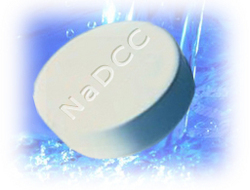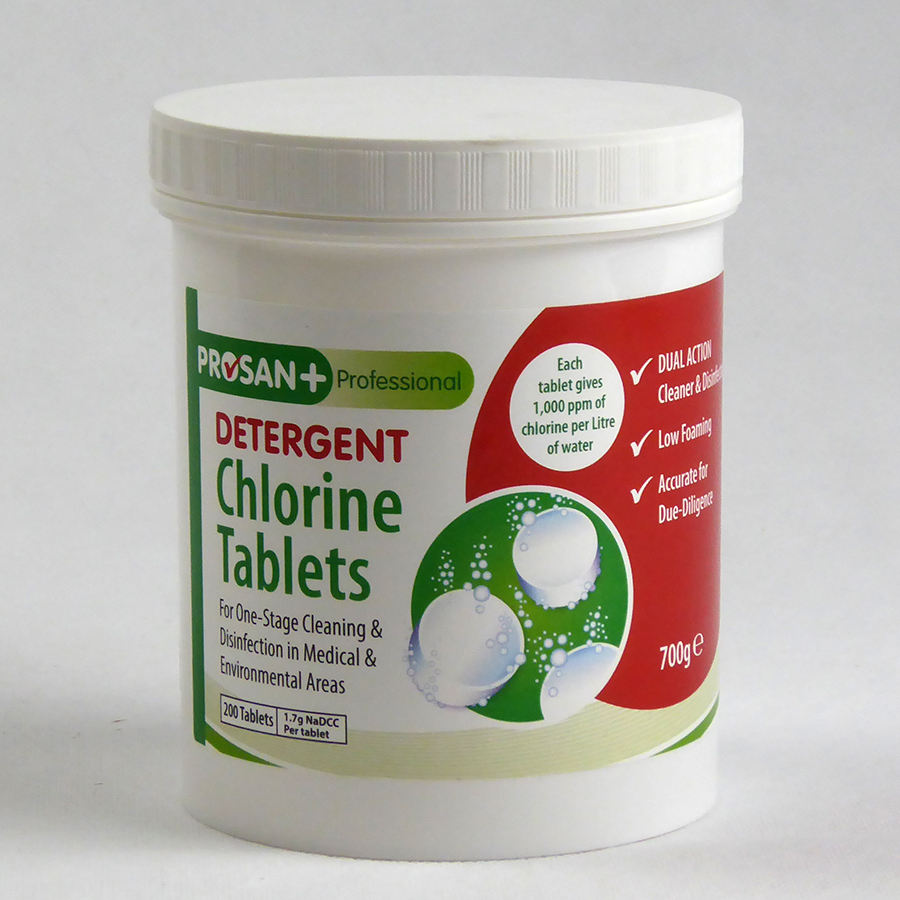CHLORINE, 1 g (NaDCC / dichloroisocyan. sodium 1.67 g), tab.
STD
SDISNADC1T-
Valid Article
Account code:
60210
HS Code:
282810
Last Updated on:
17/01/2025, 22:20:30
Former
Code(s):
DDISNADC1T-
Classification of the medicines in groups and subgroups according to their therapeutic use.
The classification used by MSF is based on the WHO Model List of Essential Medicines.
D0302 - Dichloroisocyanurates for the disinfection of medical devices
European Medical Device Nomenclature (EMDN) is the nomenclature of use by manufacturers when registering their medical devices in the EUDAMED database. EMDN is characterised by its alphanumeric structure that is established in a seven-level hierarchical tree.
Hazardous materials and products (identified by their 4-digit transport UN-number) must be transported under certain conditions as specified in the MSDS sheet (Material Safety Data Sheet).
Gr 1 - PT 2
Biocide: Products that are intended to destroy, render harmless, prevent the action of, or otherwise exert a controlling effect on any harmful organism by chemical or biological means.
The product is part of at least one Kit.
A kit is a collection of products (medical and/or logistic) that are needed for a certain intervention in emergency. The choice and quantity of the articles reflects the MSF protocols for this specific situation. The use of Kits allows to start an intervention without a detailed evaluation.
CHLORINE (NaDCC)
Definition
Antiseptic and disinfectant, used for:
- equipment and linen
- floors and surfaces
- wounds
Specifications
Effervescent tablet containing 1.67 mg sodium dichloroisocyanurate (or NaDCC or sodium troclosene or sodium dichloro-s-triazinetrione) which releases 1 g available chlorine when dissolved in water.
The strenght of solutions is usually not expressed in NaDCC concentration, but in content of available chlorine (either in g or mg per litre, or in parts per million [ppm], or in percentage).
- 1 mg/litre = 1 ppm = 0.0001%
- 1 tablet of 1 g per litre = 1 g/l or 0.1% or 1000 ppm available chlorine
Instructions for use
- Prepare solutions with clean water, just before use, in non metallic containers
- Disinfection of linen: to be used only for white cotton or linen (risk of discoloration). Don't exceed 15 minutes soaking. Do not use solutions exceeding 0.1% available chlorine. Rinse thoroughly.
- Pre-disinfection and disinfection of instruments: prefer the detergent-disinfectant solution (SDISMDQA1T5) which is less corrosive (see related articles below)
Some restricted information has been hidden. Sign in
to see this information
Precautions for Use
- To avoid any accidental ingestion of tablets: DO NOT STORE THEM NEAR ORAL TABLETS
- Do not expose to a naked flame, do not incinerate
- Do not mix with acid solutions (ex: urine) since this causes release of toxic chlorine gas.
- Avoid breathing dust/fume/gas/mist/vapours/spray: this may cause respiratory irritation
- Wash … thoroughly after handling.
In case of exposure:
- IF IN EYES: rinse continuously with water for several minutes
- IF INHALED: Remove to fresh air and keep at rest in a position comfortable for breathing.
Storage
- Store in a dry and well ventilated place.
- Be sure containers are well sealed after use.
Transport Dangerous Goods
- check the UN code for transport on the SDS (UN3077)
- Class: 9
- Packing group: III
- Proper shipping name: Environmentally hazardous substance, solid, n.o.s
- ICAO/IATA Special Provision A197: items of UN3077 (Environmentally Hazardous Solids) are exempt from the regulations when the inner packaging is not exceeding 5 kilos or liters.
Waste management
- Avoid release to the environment: very toxic to aquatic life with long lasting effects
- Dispose of contents/container to location in accordance with local and regional/ national/ international regulations
Some restricted information has been hidden. Sign in
to see this information






![[KMEDMSUP04D] (supplementary unit 2018) MODULE RTR](/web/image/product.template/572555/image_256/%5BKMEDMSUP04D%5D%20%28supplementary%20unit%202018%29%20MODULE%20RTR?unique=3bf3c71)
![[KMEDMTHIS24] (kit TB & HIV start) TB SPUTUM COLLECTION 2021](/web/image/product.template/575129/image_256/%5BKMEDMTHIS24%5D%20%28kit%20TB%20%26%20HIV%20start%29%20TB%20SPUTUM%20COLLECTION%202021?unique=7995f43)
![[KMEDMSTE02D] MODULE, STERILIZATION, 24 litres, RTR](/web/image/product.template/569134/image_256/%5BKMEDMSTE02D%5D%20MODULE%2C%20STERILIZATION%2C%2024%20litres%2C%20RTR?unique=f6a65ab)
![[KMEDMSTE9D-] (module central sterilization 90 l) DISINFECTION, RTR](/web/image/product.template/569140/image_256/%5BKMEDMSTE9D-%5D%20%28module%20central%20sterilization%2090%20l%29%20DISINFECTION%2C%20RTR?unique=f6a65ab)
![[KMEDMSUP05D] (IEHK 2024 suppl. module) SUPPLEMENTARY RTR UNIT](/web/image/product.template/583178/image_256/%5BKMEDMSUP05D%5D%20%28IEHK%202024%20suppl.%20module%29%20SUPPLEMENTARY%20RTR%20UNIT?unique=eb22339)
![[KWATMWAMH1D] (module, medical waste management) HYGIENE RTR](/web/image/product.template/551671/image_256/%5BKWATMWAMH1D%5D%20%28module%2C%20medical%20waste%20management%29%20HYGIENE%20RTR?unique=2085a9e)
![[KMEDMSTE3D-] (module central sterilization 39 l) DISINFECTION, RTR](/web/image/product.template/569146/image_256/%5BKMEDMSTE3D-%5D%20%28module%20central%20sterilization%2039%20l%29%20DISINFECTION%2C%20RTR?unique=63481ed)
![[CWATDISINT2] CHLORINE, 20mg, NaDCC 33mg, for disinfection 5l water, tab](/web/image/product.template/547372/image_256/%5BCWATDISINT2%5D%20CHLORINE%2C%2020mg%2C%20NaDCC%2033mg%2C%20for%20disinfection%205l%20water%2C%20tab?unique=b6943c3)
![[CWATDISINTF] CHLORINE, 5mg, NaDCC 8.5mg, for disinfection 1l water, tab](/web/image/product.template/547394/image_256/%5BCWATDISINTF%5D%20CHLORINE%2C%205mg%2C%20NaDCC%208.5mg%2C%20for%20disinfection%201l%20water%2C%20tab?unique=b6943c3)
![[CWATDISINTT] CHLORINE, 10mg, NaDCC 17mg, for disinfection 5l water, tab](/web/image/product.template/547366/image_256/%5BCWATDISINTT%5D%20CHLORINE%2C%2010mg%2C%20NaDCC%2017mg%2C%20for%20disinfection%205l%20water%2C%20tab?unique=b6943c3)